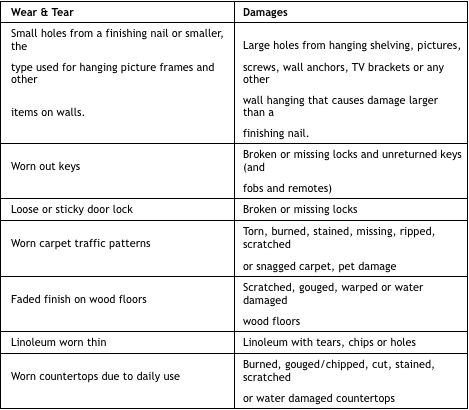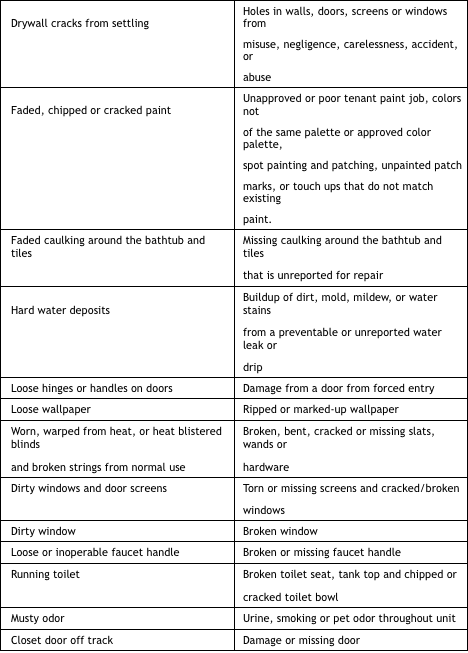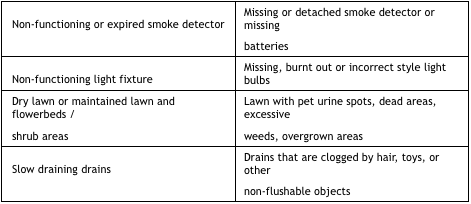Wear & Tear vs Damage – what is the Difference?
Landlords must understand the practical difference between wear & tear and damages especially when reconciling a tenant’s security deposit. It is important to factor in the length of the tenancy as well as the life expectancy of items when determining what to charge against a tenant’s security deposit.
Courts have ruled that the length of time a tenant has occupied a property be taken into consideration when accessing damages in relation to deductions to a tenant’s security deposit. The longer a resident has resided in a property, the more allowance must be given for wear and tear considerations. The remaining anticipated life of an item is important to consider. For instance, if a tenant has lived in a property for 15 years and the carpet is in a condition where it should be replaced, the carpet is essentially due for a change and has experienced is life expectancy. In this example, even if the carpet is damaged and stained, the landlord cannot deduct for the carpet replacement.
For the purpose of reconciling a tenant’s security deposit, wear and tear can be defined as ‘the deterioration which occurs, based upon the use for which the rental unit is intended without negligence, carelessness, accident, or abuse of the premises or equipment or chattels by the tenant or member of the household, its invitees and guests.’
Conversely, damage can therefore be defined as deterioration which occurs due to negligence, carelessness, accident or abuse of the premises or equipment or chattels by the tenant…
Normal wear and tear does not include dirt however excessive, uncleanliness is considered negligence, carelessness or abuse.
Citysearch uses judgement in this evaluation and have created internal standards regarding assessing wear and tear. This subject can an ambiguous so having standards can assist in providing some clarity. Citysearch has a ‘wear and tear’ guideline document with specific situations. This guideline addresses small versus large holes from the hanging of artwork and TVs, worn carpet versus stained and ripped carpet, dirty windows versus broken windows and so on.
A few practical examples however there can be specific exceptions:







